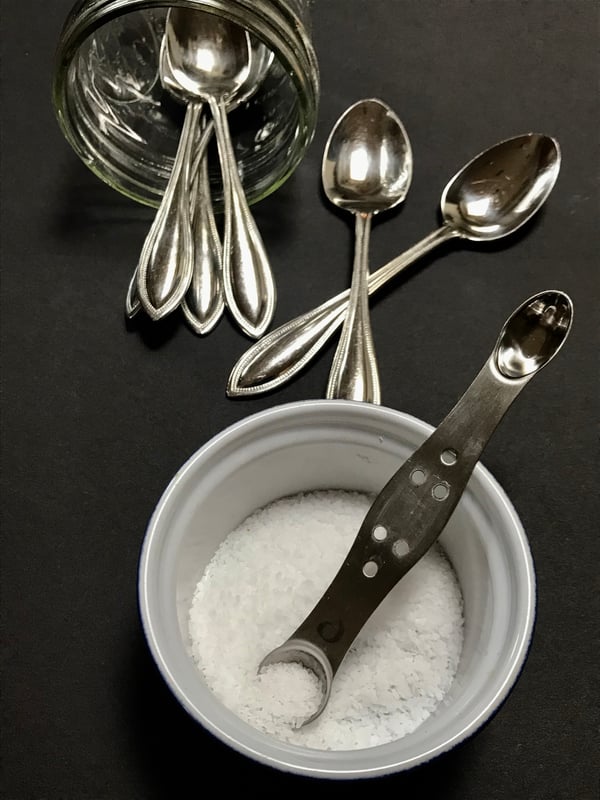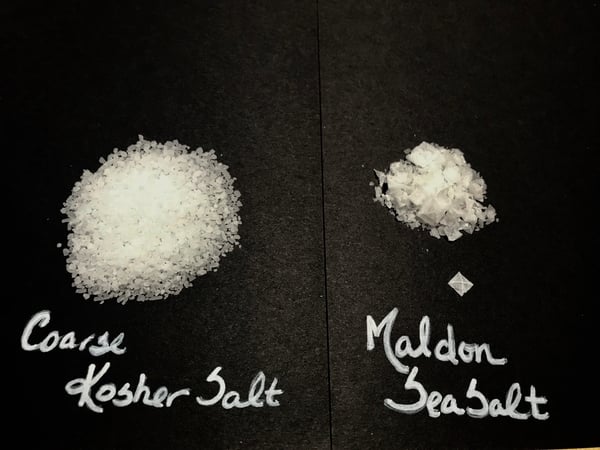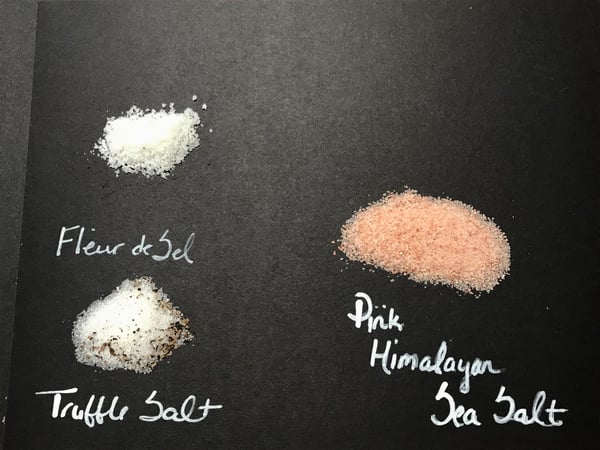A Chef's Tricks of the Trade

One of the most frequent questions students ask is “What are the most common mistakes home cooks make?” It's one of my favorite questions because I believe if you can resolve just two problems, you can immediately evolve into a great cook. My answer is simple, “Get your knives sharpened, and don’t be afraid of salt.”
Knives
The unfortunate reality is most home cooks are working with terribly dull knives, and have been for so long, that they think its normal to fight with the food they are trying to cut, chop, slice, or dice. It makes cooking a chore, but it’s also a relatively easy problem to solve. Many knife shops, kitchen supply stores, and even some farmers’ markets have professional knife sharpening experts on hand.
The Chopping Block offers very affordable, thorough Knife Skills classes that will teach you everything you want to know about knives – types, styles, construction of, how to clean, store and even sharpen them. And most important, you can try out different knives in the class while you learn various cutting techniques.
The next question usually is: “I have so many different knives, I never know which one to use when.” If you’d like to learn more, check out my blog The Only Four Knives You Need in Your Kitchen.
Salt
Poor salt. It has become so controversial it is almost considered a “four-letter” word, and in my opinion its bad rap is unfair. The truth is, salt is an essential ingredient for many reasons, not the least of which is it makes food taste delicious. Sadly, it has been so misused and abused, (think processed food) many people shy away from it unnecessarily. But that doesn’t have to be the case. I am here to help you understand when and how to use salt properly so all your dishes can be as yummy as the ones you taste in restaurants or here in cooking classes at The Chopping Block.
When do I use salt?
There are two main times for using salt, described as salting your food, and seasoning your food with salt.
- Salting your food is when you add salt at the very end of the cooking process, because the salt itself is an essential flavor component of the dish. Think French fries and potato chips, pretzels and popcorn. In these foods, salt is one of the stars of the show, an essential flavor profile of the dish. In all my years in the food world, I have yet to see anyone order French fries unsalted – if anything most of us are reaching for the saltshaker because the fries need more!
- Seasoning your food with salt is a process that happens in stages throughout the cooking process that allows the salt to actually penetrate into the ingredients. When done correctly, the food will never taste salty – just delicious! Now I’ll admit learning how to properly season your food with salt has a learning curve, and I’ve made some salt bombs to prove it - but with a few tricks, it won’t take long to master the technique.
Here are my tips:
- Use good quality salt (more to come on that).
- Place salt in a small ramekin or bowl so it is easy to access with your fingers or measuring spoons and have a jar of tasting spoons ready.

- Once you begin to cook, you will want to add small pinches (equal to 1/8 teaspoon) of salt each time you add a new set of ingredients to the pan. For example, let’s say you are making a vegetable soup, and the recipe says first sauté onions, carrots and celery – you would add salt at that time, and then each time you add another set of ingredients you add another small pinch of salt. Remember to add the salt one small pinch at a time – stirring to incorporate, waiting at least a minute and then tasting each time to check if seasoning is adequate. Tasting your food while you cook is essential to training your palette to know when food has been properly seasoned. You aren’t tasting for saltiness; you are tasting to check if the food is flavorful.
By adding small, measured amounts of salt as you go, and tasting throughout the cooking process you will quickly learn the difference between bland vs. flavorful, salty vs. seasoned. And before you know it, you won’t need to measure the salt as carefully, you’ll be able to gauge how much salt you are using through the good ol’ pinch or dash method!
Type of Salt
It's also important to be familiar with different types of salt. At The Chopping Block, we use Maldon Sea Salt almost exclusively in our classes. It’s a delicious, slightly briny flavored pyramid shaped sea salt from England. I love it, especially as a finishing salt on roasted vegetables, etc., but it’s a little pricey for me to use in recipes on a regular basis, so I swear by Morton’s kosher salt.

As you can see, the crystals in the kosher and Maldon salt are very different. If you prefer, you can use sea salt. I will often use a mild tasting fine ground sea salt for baking, perhaps a coarse sea salt such as Fleur de Sel as a finishing salt for my mixed nut brittle or Truffled Salt Popcorn (a famous recipe of The Chopping Block).

But in savory cooking, my choice is always kosher salt.
What’s important to remember is all salt is not created equal. Much like wine, where a salt comes from will greatly impact its flavor. As well, the size of the salt crystal will influence its intensity, so the smaller the crystal usually the higher the sodium concentration.
If you’re not sure which salt to use, get them all out of your cabinet, taste each one side by side and choose your favorite(s). Once you find one you like, stick with it, especially when it comes to cooking and baking, it will help with consistently of seasoning. My only rule is to get rid of the iodized table salt as soon as possible – you know the one that often comes in a cylindrical canister. I mean run, don’t walk to the garbage can! It's flavor is overpowering and harsh with a bitter metallic aftertaste. If you don’t believe me, taste it next to good kosher or sea salt, you’ll never go back.
If you are looking for a class that teaches you more about flavor profiles, check out our Flavor Dynamics class where a chef will walk you through the virtues of salt and so much more!

